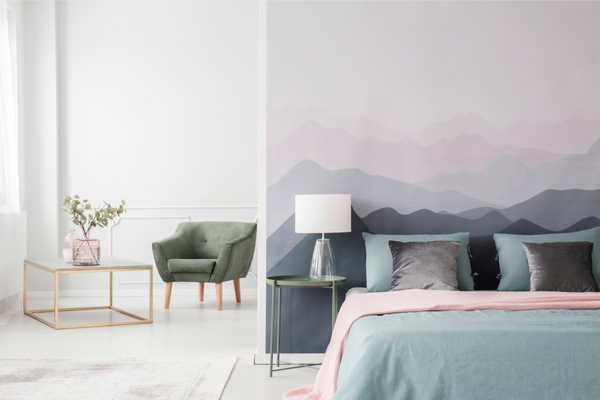Wallpaper has been making a comeback for the past few years, but this year it’s coming back in full force. Yes, you read that right. WALLPAPER! But not in the way you might expect. Wallpaper isn’t covering your house wall-to-wall anymore; this design trend is more to give you some pops of color, fun designs, or an accent wall. It’s being used in small spaces, such as powder rooms, behind built-ins, and cabinet/shelf lining.
Wallcoverings sales have begun to creep back up, and while the overall business is still below the peak levels of decades ago, it is headed in the right direction. One study estimates that the global market for digitally printed wallpaper, which was more than $2 billion in 2017, would reach $7.5 billion by 2026. Those numbers are big, but they also reflect the fact that wallcoverings remain far more popular in Europe and Asia than in America. But in the U.S., the business has been climbing. A big factor in those sales increases? E-commerce.
“According to Google data, wallpaper-related searches are up an average of 50 percent the past 12 months versus the 12 months prior,” York Wallcovering’s product marketing manager, Carol Miller, said in an interview with Business of Home. She credited several factors for the rise—chief among them, a new, younger customer base that doesn’t come with the baggage of memories of wallpaper of yore. “An entire generation that has no previous assumptions regarding wallpaper removability are discovering wallpaper via social media, and identifying it as a way to easily personalize spaces, because technical advances in removability have kept pace with consumer demands.”
Changes in the way people work are also driving business. “Culturally, residential and commercial spaces are melding as more people work from home and abandon standard rules of space planning, hours and interaction within the workplace,” says Miller. “Once consumers understand that wallcoverings are used in commercial applications because they are more durable than paint, they become wallpaper converts.”
Wallcovering producers have begun to tout the environmental advantages of their products too. The Wallcoverings Association, the industry’s trade organization, reported last October that more than 2,000 individual styles had received the group’s sustainability certification. There is also the modern-day pop culture factor—because now, it’s not just the old-time movies that are good for wallpaper-spotting. “Movies, TV and advertising have embraced wallpaper, and it is becoming an ever-present subtle backdrop within the arts,” says Miller.
The combination of factors seems to indicate that this time, the long-rumored wallcoverings renaissance may actually be real—and that when people talk about their wallpaper these days, they are referring to the walls of their homes, not the screens of their laptops and phones.
—
Photo Credit: Photographee.eu / Shutterstock.com
